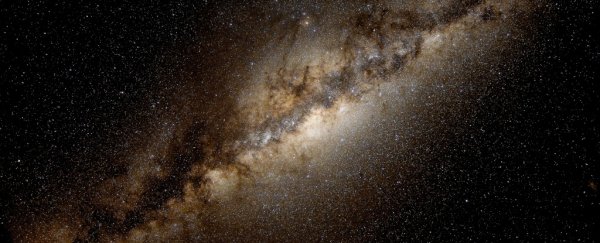Astronomers have discovered a strange gas cloud that's blowing an enormous 'bubble' of empty space into our Milky Way galaxy. This hole is so big, it stretches a remarkable 3,000 light-years wide.
Even weirder, the team says the cloud – which is about 16,000 times more massive than our Sun – should have disintegrated upon colliding with the Milky Way's galactic disc, but it didn't, and they have no idea what could have caused it to form in the first place.
The 'supershell' cloud – known as CHVC040 – was originally found back in 2007, but it wasn't until recently that astronomers examined it using the Arecibo radio telescope in Puerto Rico.
Viewing the cloud through a more advanced telescope allowed researchers led by Geumsook Park from Seoul National University in South Korea to discover a high-velocity cloud in the centre of this larger supershell.
This unexpected detail added even more mystery to the find, because it's highly unlikely that both of the clouds could have formed together without having the same source.
While astronomers are aware of many different supershells inside the Milky Way, how they form is still largely debated. One of the most promising hypotheses is that the voids form after multiple supernovae explode at once, causing a giant 'bubble' of gas that expands outward with tremendous force.
But according to Mark Zastrow at New Scientist, the problem is that these supershells were found in a rather empty region of the galaxy, making a supernova an unlikely source of the energy.
Many supershells that have previously been found also don't have traces of star clusters at their centres, suggesting that there might be a completely different cause that isn't understood, or hasn't been witnessed yet.
Despite the fact that it will take more research to better understand what's going on inside CHVC040, the discovery shows how better radio telescopes can tug out detail that was missed by earlier observations. Hopefully, as the technology gets better, astronomers will be able to figure out what's going on.
As Zastrow explains, a better understanding of supershells could shed new light on how stars form throughout the Universe, and how supernovae can give birth to large swathes of interstellar dust that eventually create new stars and planets.
The findings have been accepted for publication in Astrophysical Journal Letters. You can access them at arXiv.org.
